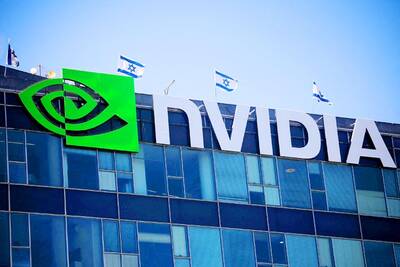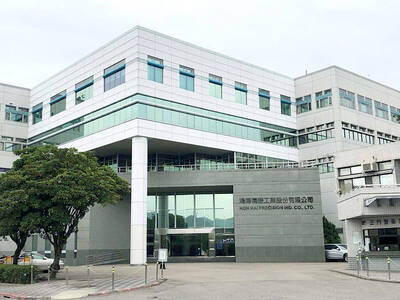Average daily day trading transaction on the local stock market climbed to a high of NT$66.1 billion (US$2.36 billion) in March, prompting a call for the Financial Supervisory Commission (FSC) to rethink an extension of a tax cut on day trading transactions.
In April 2017, a tax cut on day trading transactions — from 0.003 percent to 0.0015 percent — took effect. It was to return to the previous level next year, but the commission and the Ministry of Finance have proposed extended the cut for another five years.
Experts said the policy favors intraday traders and has made the local stock market a “casino.”
Appacus Foundation president Sean Chen (陳沖), a former vice premier and former FSC chairman, on Monday said that the tax cut extension would incentivize investors to engage in day trading rather than make long-term investments.
The tax cut was implemented as a “shot in arm” for the market, as turnover was less than NT$100 billion in a single day, but turnover soared to more than NT$700 billion last month, Chen said.
If the government normalizes the tax cut, it would send a message to investors that day trading has better tax rates than long-term investing, and would make the market a “casino,” he said.
FSC Chairman Thomas Huang (黃天牧) told reporters on the sidelines of an event in Taipei on Monday that while he respected Chen’s opinion, he did not agree with the casino analogy.
Whether reducing a single tax makes the market a “casino” needs careful consideration, Huang said, adding that further discussion about the extension were welcomed.
Day trading is just a mechanism that allows investors to make profits by buying or selling shares over short periods, and can boost the market trading volume, the commission said.
Average daily day trading transaction advanced to a record NT$66.1 billion in March, accounting for 30.34 percent of total market turnover, up from an average of NT$10.6 billion and a weighting of 9.63 percent from April 2016 to March 2017, a year before the tax cut took effect, FSC data showed.
The average daily amount of day trading transactions rose to NT$37.5 billion during the first year of the tax reduction, making up 22.34 percent of total transactions, the data showed.
The number of day traders increased to 108,000 at the end of last year, up from 44,000 a year earlier, the data showed.

Shares in Taiwan closed at a new high yesterday, the first trading day of the new year, as contract chipmaker Taiwan Semiconductor Manufacturing Co (TSMC, 台積電) continued to break records amid an artificial intelligence (AI) boom, dealers said. The TAIEX closed up 386.21 points, or 1.33 percent, at 29,349.81, with turnover totaling NT$648.844 billion (US$20.65 billion). “Judging from a stronger Taiwan dollar against the US dollar, I think foreign institutional investors returned from the holidays and brought funds into the local market,” Concord Securities Co (康和證券) analyst Kerry Huang (黃志祺) said. “Foreign investors just rebuilt their positions with TSMC as their top target,

H200 CHIPS: A source said that Nvidia has asked the Taiwanese company to begin production of additional chips and work is expected to start in the second quarter Nvidia Corp is scrambling to meet demand for its H200 artificial intelligence (AI) chips from Chinese technology companies and has approached contract manufacturer Taiwan Semiconductor Manufacturing Co (TSMC, 台積電) to ramp up production, sources said. Chinese technology companies have placed orders for more than 2 million H200 chips for this year, while Nvidia holds just 700,000 units in stock, two of the people said. The exact additional volume Nvidia intends to order from TSMC remains unclear, they said. A third source said that Nvidia has asked TSMC to begin production of the additional chips and work is expected to start in the second

REVENUE PERFORMANCE: Cloud and network products, and electronic components saw strong increases, while smart consumer electronics and computing products fell Hon Hai Precision Industry Co (鴻海精密) yesterday posted 26.51 percent quarterly growth in revenue for last quarter to NT$2.6 trillion (US$82.44 billion), the strongest on record for the period and above expectations, but the company forecast a slight revenue dip this quarter due to seasonal factors. On an annual basis, revenue last quarter grew 22.07 percent, the company said. Analysts on average estimated about NT$2.4 trillion increase. Hon Hai, which assembles servers for Nvidia Corp and iPhones for Apple Inc, is expanding its capacity in the US, adding artificial intelligence (AI) server production in Wisconsin and Texas, where it operates established campuses. This

Garment maker Makalot Industrial Co (聚陽) yesterday reported lower-than-expected fourth-quarter revenue of NT$7.93 billion (US$251.44 million), down 9.48 percent from NT$8.76 billion a year earlier. On a quarterly basis, revenue fell 10.83 percent from NT$8.89 billion, company data showed. The figure was also lower than market expectations of NT$8.05 billion, according to data compiled by Yuanta Securities Investment and Consulting Co (元大投顧), which had projected NT$8.22 billion. Makalot’s revenue this quarter would likely increase by a mid-teens percentage as the industry is entering its high season, Yuanta said. Overall, Makalot’s revenue last year totaled NT$34.43 billion, down 3.08 percent from its record NT$35.52